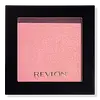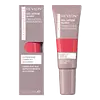What's inside
What's inside
 Key Ingredients
Key Ingredients

No key ingredients
 Benefits
Benefits

No benefits
 Concerns
Concerns

 Ingredients Side-by-side
Ingredients Side-by-side

Water
Skin ConditioningGlycerin
HumectantMica
Cosmetic ColorantPPG-24-Glycereth-24
EmulsifyingAmmonium Acryloyldimethyltaurate/Vp Copolymer
Dimethicone
EmollientAmodimethicone
Caprylyl Glycol
EmollientCarbomer
Emulsion StabilisingCitrullus Lanatus Fruit Extract
Skin ConditioningDimethicone/Vinyl Dimethicone Crosspolymer
Skin ConditioningDisodium EDTA
EDTA
Lens Esculenta Fruit Extract
Skin ConditioningPentylene Glycol
Skin ConditioningPyrus Malus Fruit Extract
Skin ConditioningSodium Lactate
BufferingSodium PCA
HumectantTrisodium EDTA
Phenoxyethanol
PreservativeCI 75470
Cosmetic ColorantCI 77491
Cosmetic ColorantCI 77492
Cosmetic ColorantCI 77499
Cosmetic ColorantCI 45410
Cosmetic ColorantCI 73360
Cosmetic ColorantCI 15850
Cosmetic ColorantCI 77891
Cosmetic ColorantCI 15985
Cosmetic ColorantWater, Glycerin, Mica, PPG-24-Glycereth-24, Ammonium Acryloyldimethyltaurate/Vp Copolymer, Dimethicone, Amodimethicone, Caprylyl Glycol, Carbomer, Citrullus Lanatus Fruit Extract, Dimethicone/Vinyl Dimethicone Crosspolymer, Disodium EDTA, EDTA, Lens Esculenta Fruit Extract, Pentylene Glycol, Pyrus Malus Fruit Extract, Sodium Lactate, Sodium PCA, Trisodium EDTA, Phenoxyethanol, CI 75470, CI 77491, CI 77492, CI 77499, CI 45410, CI 73360, CI 15850, CI 77891, CI 15985
Ingredients Explained
These ingredients are found in both products.
Ingredients higher up in an ingredient list are typically present in a larger amount.
Ci 77491 is also hydrated iron III oxide. It's sole purpose is to give a red/pink hue to products.
Iron III oxides are classified as inorganic chemicals for coloring.
Synthetically created Ci 77491 is considered safer than those naturally found. This is because the synthetically created version may contain less impurities. Iron oxides are generally non-toxic and non-allergenic.
Learn more about CI 77491Ci 77492 is also hydrated iron III oxide. It's sole purpose is to give a yellow hue to products.
Iron III oxides are classified as inorganic chemicals for coloring.
Synthetically created Ci 77492 is considered safer than those naturally found. This is because the synthetically created version may contain less impurities. Iron oxides are generally non-toxic and non-allergenic.
Learn more about CI 77492Ci 77499 is also hydrated iron III oxide. It is created from mixing red and black iron oxides. This helps give shades of darkness to a product.
Iron III oxides are classified as inorganic chemicals for coloring.
Mica is a naturally occurring mineral used to add shimmer and color in cosmetics. It can also help improve the texture of a product or give it an opaque, white/silver color.
Serecite is the name for very fine but ragged grains of mica.
This ingredient is often coated with metal oxides like titanium dioxide. Trace amounts of heavy metals may be found in mica, but these metals are not harmful in our personal products.
Mica has been used since prehistoric times throughout the world. Ancient Egyptian, Indian, Greek, Roman, Aztec, and Chinese civilizations have used mica.
Learn more about Mica